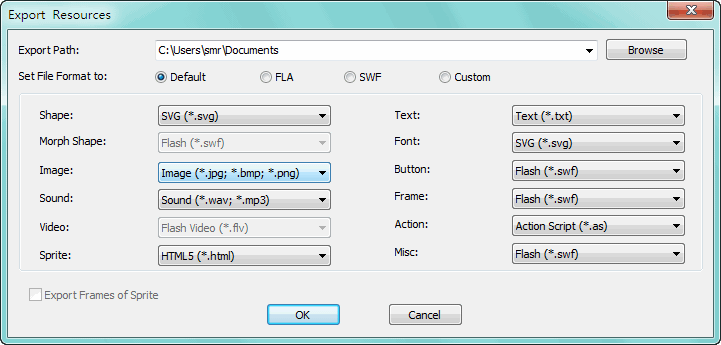


#SOTHINK SWF DECOMPILER LOOP MOVIE MOVIE#
This way, you can consistently refer to one Flash movie file (.swf) in your HTML code and incrementally save your Flash documents. For example, if you have a Flash document named main_100.fla, set the Flash movie filename to main.swf, and then every new Flash document version you save (for example, main_101.fla, main_102.fla, and so on) will still produce a main.swf file. You can enter nonversion-specific filenames for Flash documents that you incrementally save as you work. Thus, sample.swf, sample.html, sample.gif, and so on would result.

For example, if your movie is named sample.fla and you click the Use Default Names button, this is the base from which the names are generated in publishing. If you click the Use Default Names button, all of the File fields fill in with the name of your Flash document, followed by the file format's suffix. Click each type's tab to specify settings to control the particulars of the movie or file that will be generated in that format.įigure 21-3: The Formats tab of the Publish Settings dialog box enables you to select the published file formats and use default or custom names for these published files.
#SOTHINK SWF DECOMPILER LOOP MOVIE MAC#
For each Type that is checked, a tab appears in the Publish Settings dialog box (with the exception of the Windows and Mac projector options). The dialog box opens to the Formats tab, which has check boxes to select the formats in which your Flash document will be published (see Figure 21-3). You learn more about ActionScript and the implications of ActionScript 2.0 in Part VII, "Approaching ActionScript."Ĭhoose File ð Publish Settings to access the Publish Settings dialog box, which is nearly identical for both the Windows and Macintosh versions of Flash 8. You should be aware that the default ActionScript language version is AS2.0 for new Flash documents. The Publish Settings dialog box has many new features that were introduced in Flash MX 2004, with some updates in Flash 8. If you want to customize the settings of the exported file types, you should familiarize yourself with the Publish Settings before you attempt to use the Publish command. By default, new Flash documents created with Flash 8 use Publish Settings that will export a Flash movie file (.swf) and an HTML file with the proper markup tags to utilize the Flash Player 8 plug-in or ActiveX Control. The Publish Settings command (File ð Publish Settings) is used to determine which file formats are exported when the File ð Publish command is invoked.


 0 kommentar(er)
0 kommentar(er)
